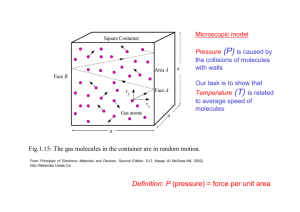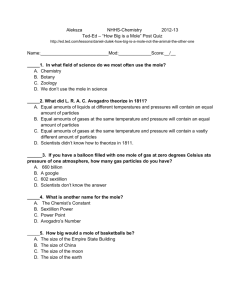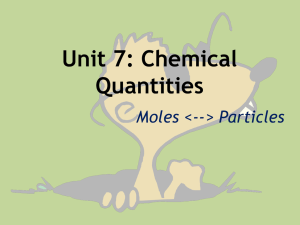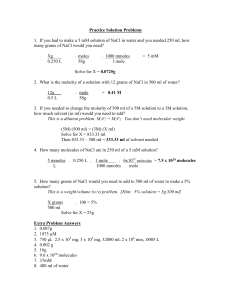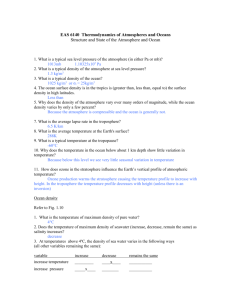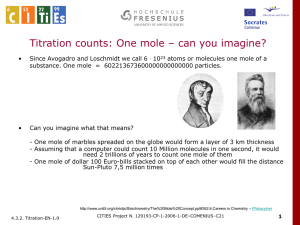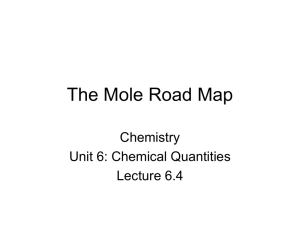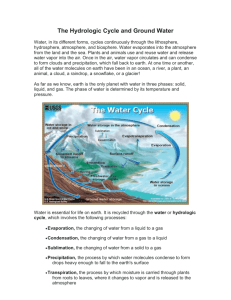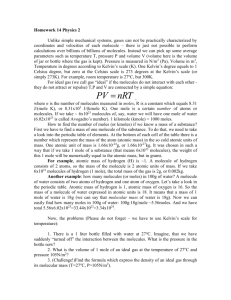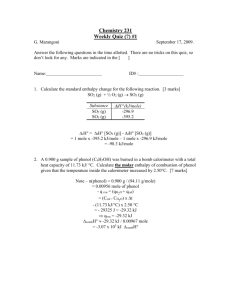Ideal gas law - Department of Atmospheric Sciences
advertisement
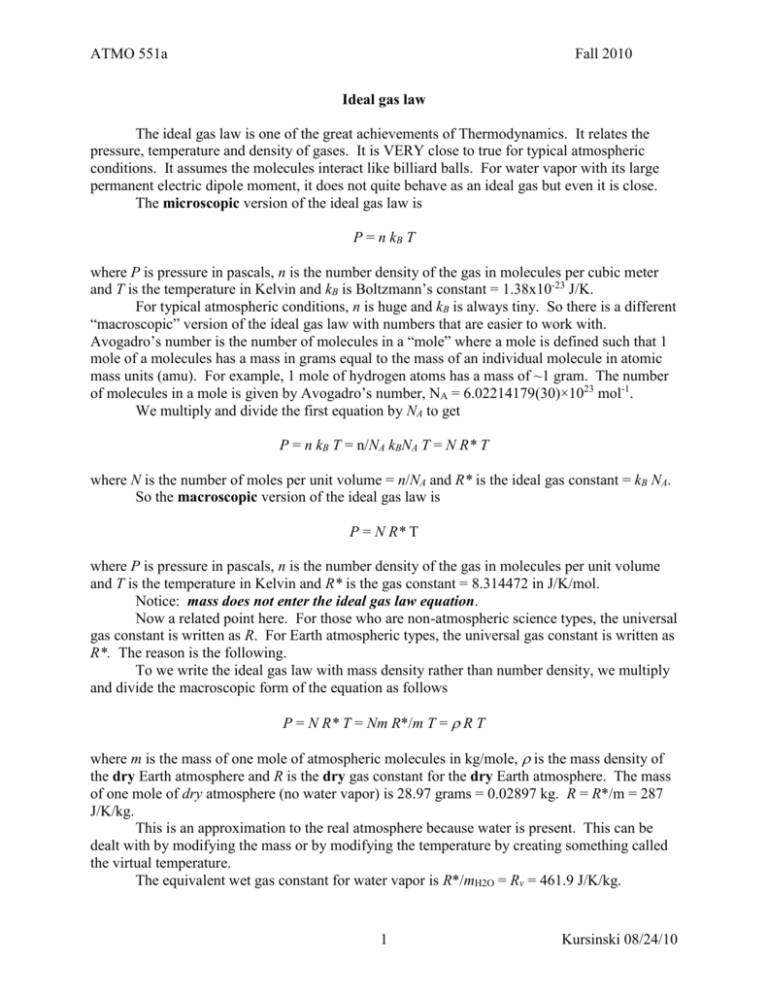
ATMO 551a Fall 2010 Ideal gas law The ideal gas law is one of the great achievements of Thermodynamics. It relates the pressure, temperature and density of gases. It is VERY close to true for typical atmospheric conditions. It assumes the molecules interact like billiard balls. For water vapor with its large permanent electric dipole moment, it does not quite behave as an ideal gas but even it is close. The microscopic version of the ideal gas law is P = n kB T where P is pressure in pascals, n is the number density of the gas in molecules per cubic meter and T is the temperature in Kelvin and kB is Boltzmann’s constant = 1.38x10-23 J/K. For typical atmospheric conditions, n is huge and kB is always tiny. So there is a different “macroscopic” version of the ideal gas law with numbers that are easier to work with. Avogadro’s number is the number of molecules in a “mole” where a mole is defined such that 1 mole of a molecules has a mass in grams equal to the mass of an individual molecule in atomic mass units (amu). For example, 1 mole of hydrogen atoms has a mass of ~1 gram. The number of molecules in a mole is given by Avogadro’s number, NA = 6.02214179(30)×1023 mol-1. We multiply and divide the first equation by NA to get P = n kB T = n/NA kBNA T = N R* T where N is the number of moles per unit volume = n/NA and R* is the ideal gas constant = kB NA. So the macroscopic version of the ideal gas law is P = N R* T where P is pressure in pascals, n is the number density of the gas in molecules per unit volume and T is the temperature in Kelvin and R* is the gas constant = 8.314472 in J/K/mol. Notice: mass does not enter the ideal gas law equation. Now a related point here. For those who are non-atmospheric science types, the universal gas constant is written as R. For Earth atmospheric types, the universal gas constant is written as R*. The reason is the following. To we write the ideal gas law with mass density rather than number density, we multiply and divide the macroscopic form of the equation as follows P = N R* T = Nm R*/m T = R T where m is the mass of one mole of atmospheric molecules in kg/mole, is the mass density of the dry Earth atmosphere and R is the dry gas constant for the dry Earth atmosphere. The mass of one mole of dry atmosphere (no water vapor) is 28.97 grams = 0.02897 kg. R = R*/m = 287 J/K/kg. This is an approximation to the real atmosphere because water is present. This can be dealt with by modifying the mass or by modifying the temperature by creating something called the virtual temperature. The equivalent wet gas constant for water vapor is R*/mH2O = Rv = 461.9 J/K/kg. 1 Kursinski 08/24/10
